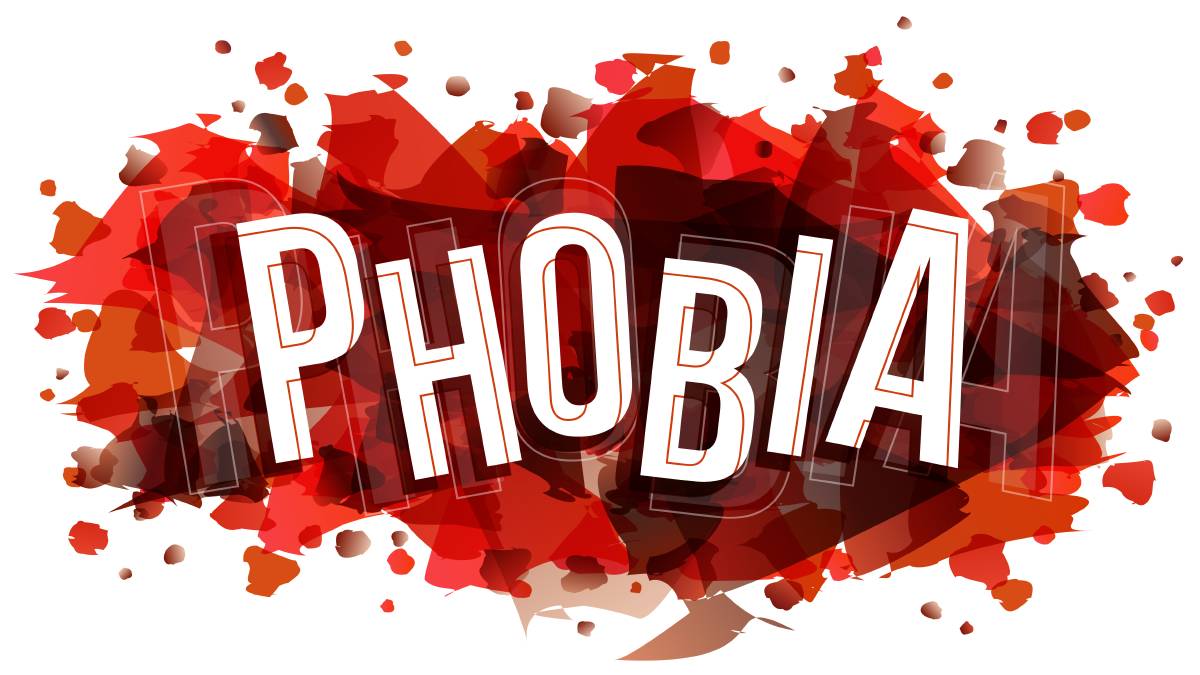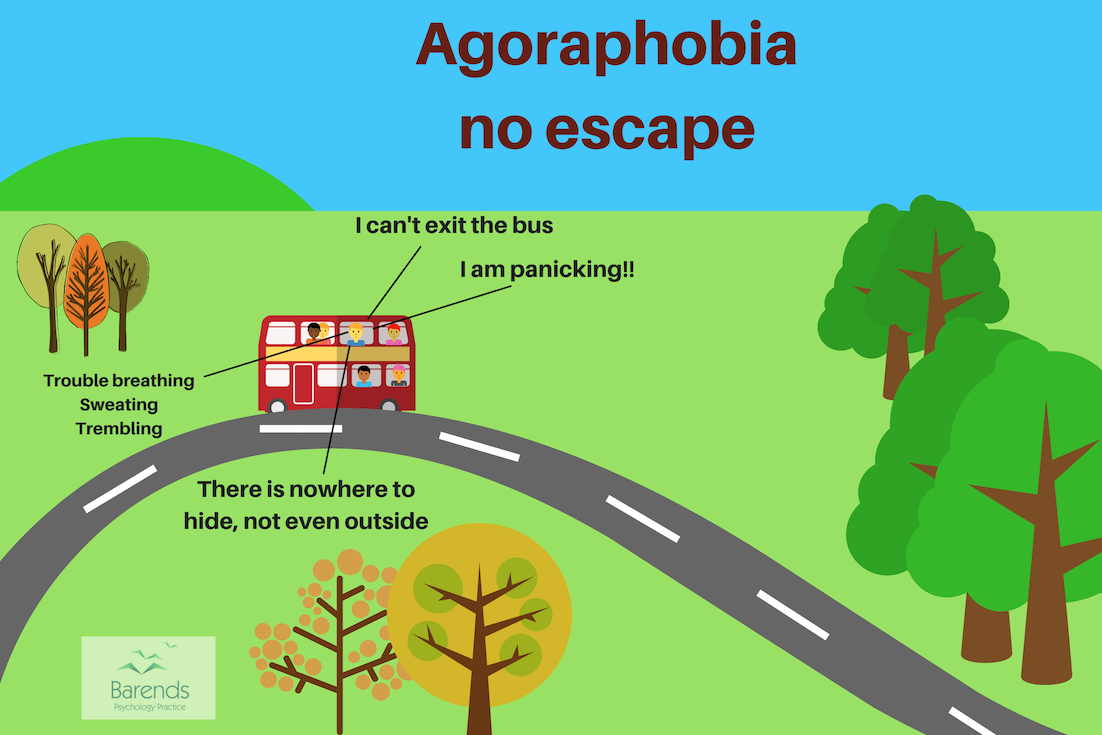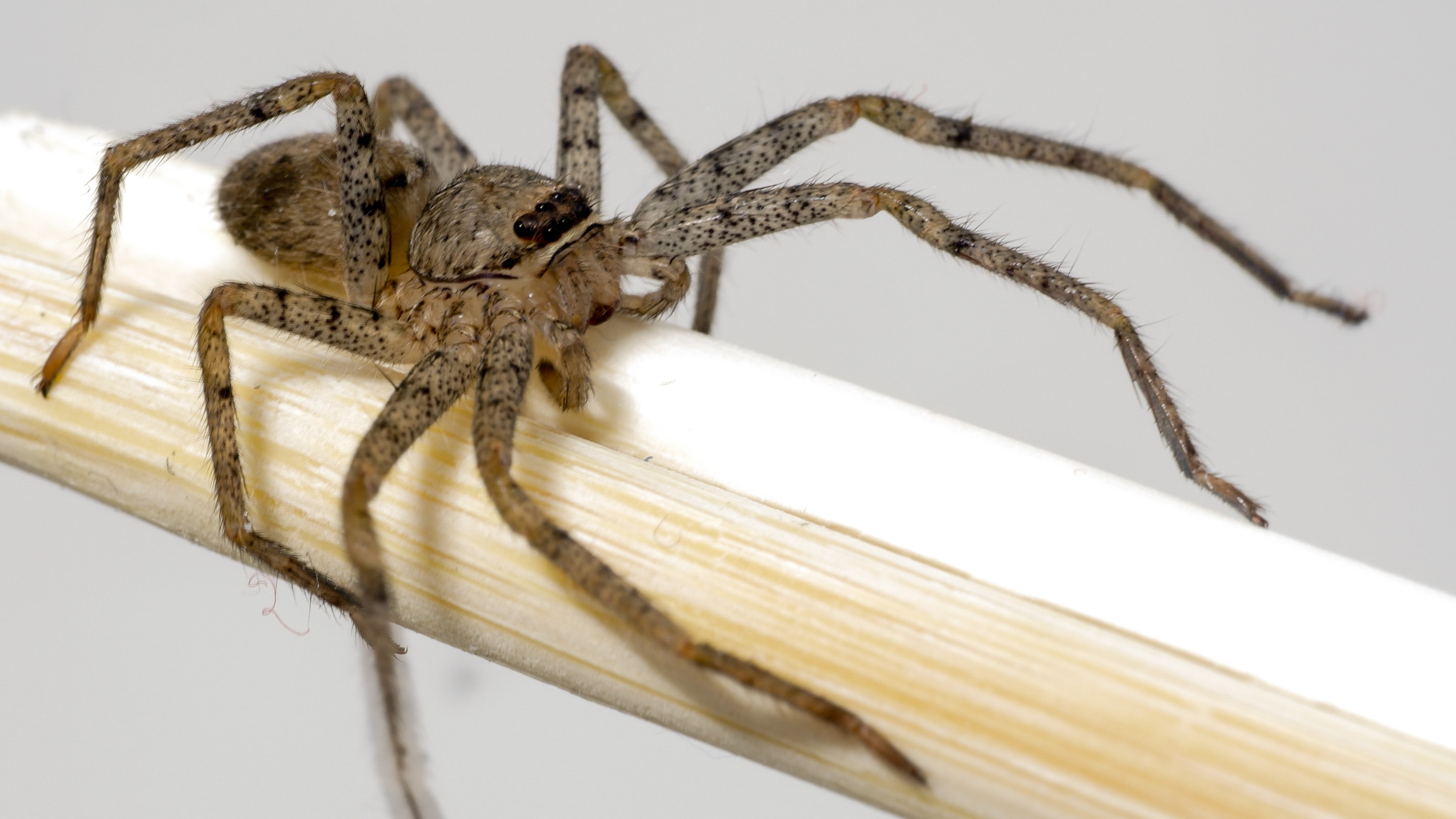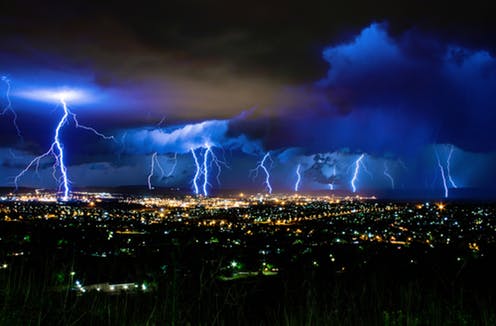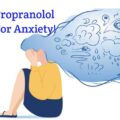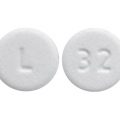A phobia is a type of anxiety disorder that causes an individual to experience extreme, irrational fear about a situation, living creature, place, or object. When a person has a phobia, they will often shape their lives to avoid what they consider to be dangerous. The imagined threat is greater than any actual threat posed by the cause of terror. The word itself comes from the Greek word phobos, which means fear or horror. Hydrophobia, for example, literally translates to fear of water. When someone has a phobia, they experience intense fear of a certain object or situation. Phobias are different than regular fears because they cause significant distress, possibly interfering with life at home, work, or school. People with phobias actively avoid the phobic object or situation or endure it with intense fear or anxiety.
Aerophobia: The fear of flying, known as aerophobia, is a type of anxiety disorder involving the extreme sense of fear and panic some people experience when they fly or anticipate flying. Many people experience nervousness or anxiety when they fly. The crowded space, turbulence, and sensations of taking off and landing can certainly be unpleasant. But some people experience an extreme sense of fear or panic when they fly, and they avoid flying altogether. If they must get on a plane, then they are likely to experience panic attacks or other intense symptoms of anxiety.
There is no specific cause of aerophobia, as the fear usually originates from a combination of factors. The fear of heights can be genetically inherited, or the fear of flying may be modeled to kids by their parents. Increased exposure to media that show plane crashes or other incidents may also play a role. Most commonly, people fear flying because they feel that they have no control over the situation and their safety. The longer a person avoids flying, the more this fear may increase. Sometimes, this fear is also associated with other phobias, such as fear of vomiting (emetophobia), fear of heights (acrophobia), or the fear of enclosed spaces (claustrophobia). Sometimes, working on these specific phobias can help resolve the aerophobia. Physical Symptoms of Aerophobia include:
- increased heart rate
- cold hands
- trembling
- nausea
- shortness of breath
- choking sensation
Agoraphobia: A fear of places or situations that trigger fear or helplessness, is singled out as a particularly common fear with its own unique diagnosis. Social phobias, which are fears related to social situations, are also singled out with a unique diagnosis. When a person experiences agoraphobia, their life may become limited as they begin to avoid places that bring on this panic. They must deal with increasing isolation from others and from experiences they once enjoyed.
There is no exact cause of agoraphobia, but people sometimes begin to fear situations where they have experienced a panic attack or extreme anxiety. When they encounter them after the attack, they may find that they are overcome with worry that it will happen again.
Signs
To qualify for a diagnosis of agoraphobia, you must experience fear or anxiety about two or more of the following situations:
- public transportation
- open spaces
- enclosed places
- being in a crowd
- being outside of their home
Claustrophobia: Fear of confined or crowded spaces is a form of anxiety disorder, in which an irrational fear of having no escape or being closed-in can lead to a panic attack. It is considered a specific phobia according to the Diagnostic and Statistical Manual 5 (DSM-5).
Triggers may include being inside an elevator, a small room without any windows, or even being on an airplane. Some people have reported that wearing tight-necked clothing can provoke feelings of claustrophobia. Claustrophobia is an anxiety disorder. Symptoms usually appear during childhood or adolescence.
Being in or thinking about being in a confined space can trigger fears of not being able to breathe properly, running out of oxygen, and distress at being restricted.
When anxiety levels reach a certain level, the person may start to experience:
- sweating and chills
- accelerated heart rate and high blood pressure
- dizziness, fainting, and lightheadedness
- dry mouth
- hyperventilation, or “over-breathing”
- hot flashes
- shaking or trembling and a sense of “butterflies” in the stomach
- nausea
- headache
- numbness
- a choking sensation
- tightness in the chest, chest pain, and difficulty breathing
- an urge to use the bathroom
- confusion or disorientation
- fear of harm or illness
It is not necessarily the small spaces that trigger the anxiety, but the fear of what can happen to the person if confined to that area.
Arachnophobia: The fear of spiders is the oldest and most common phobia in Western culture. The word Arachnophobia is derived from the Greek word ‘Arachne’ meaning spiders. The response to spiders shown by an arachnophobic individual may seem irrational to others and often to the sufferer himself. Scientists who have studied this fear of spiders explain it to be a result of evolutionary selection. This means that Arachnophobia is an evolutionary response, since spiders, especially the venomous ones, have always been associated with infections and disease. Hence, the fear of spiders triggers a “disgust response” in many individuals.
A study conducted in the UK on 261 adults showed that nearly 32% of women and 18% of men in the group felt anxious, nervous, or extremely frightened when confronted with a spider (real or images). Initial symptoms of arachnophobia or the fear of spiders may appear in one’s childhood or adolescence. However, following a traumatic episode, some or all of the following symptoms may be present at all ages when the sufferer is confronted with the object of the phobia, in this case, a spider.
- Rapid heart rate
- Dizziness
- Hot or cold flashes
- Feeling of going crazy and losing control
- Chest pain
- Feeling of choking
- Inability to distinguish between reality and unreality
- Trembling sweating
- Thoughts of death
- Nausea or other gastrointestinal distress
In some arachnophobic individuals, these symptoms may be triggered merely by anticipating contact with a spider. Even the sight or mention of cobwebs can trigger such a response.
Astraphobia: Extreme fear of thunder and lightning. It can affect people of all ages, though it may be more common in children than adults. It’s also seen in animals. Many children who have this fear will eventually outgrow it, but others will continue to experience the phobia into adulthood. Astraphobia can also manifest in adults who didn’t have it as children.
Being caught in a thunderstorm or preparing for extreme weather conditions can create reasonable levels of anxiety or fear. In people with astraphobia, thunderstorms cause an extreme reaction that can be debilitating. For people with this phobia, these feelings may be overwhelming and feel insurmountable.
A person with astraphobia will have a reaction that goes beyond these seemingly appropriate acts. They may have feelings of panic, both before and during a storm. These feelings can escalate into a full-blown panic attack and include symptoms such as:
- all-over body shaking
- chest pain
- numbness
- nausea
- heart palpitations
- trouble breathing
Other symptoms of astraphobia may include:
- sweaty palms
- racing pulse
- obsessive desire to monitor the storm
- the need to hide away from the storm, such as in a closet, bathroom, or under the bed
- clinging to others for protection
- uncontrollable crying, particularly in children
- The person may also understand that these feelings are overblown and irrational without the ability to curtail them.
These symptoms can be triggered by a weather report, conversation, or sudden sound, such as a clap of thunder. Sights and sounds that are similar to thunder and lightning may also trigger symptoms.
Hemophobia: An abnormal and persistent fear of blood. Sufferers of this very common phobia dread the sight of their own blood, the sight of the blood of another person or an animal, and sometimes printed or filmed images of blood or even thoughts of blood. Blood may remind them of their own vulnerability to injury and of the eventuality of death.
Some sufferers of hemophobia experience a typical phobic reaction characterized by an increase in blood pressure and heart rate. Other sufferers experience an atypical phobic reaction characterized by a decrease in blood pressure and heart rate, causing paleness and weakness. They may even faint. Those with the latter reaction may develop a new fear: the fear of fainting. Phobias of all types share similar physical and emotional symptoms. With hemophobia, symptoms may be triggered by seeing blood in real life or on television. Some people may feel symptoms after thinking about blood or certain medical procedures, like a blood test.
Physical symptoms triggered by this phobia may include:
- trouble breathing
- rapid heart rate
- rightness or pain in the chest
- shaking or trembling
- lightheadedness
- feeling nauseated around blood or injury
- hot or cold flashes
- sweating
Emotional symptoms may include:
- extreme feelings of anxiety or panic
- overwhelming need to escape situations where blood is involved
- detachment from self or feeling “unreal”
- feeling like you’ve lost control
- feeling like you may die or pass out
- feeling powerless over your fear
Aquaphobia: Is often mistaken for another phobia called hydrophobia. Even though they both involve water, aquaphobia and hydrophobia aren’t the same. Hydrophobia is an aversion to water that develops in humans during the later stages of rabies. Most of us have some degree of fear when it comes to water. Typically, we overcome those fears or learn ways to cope with them. But if you have aquaphobia or the fear of water, you live with a persistent and abnormal amount of fear and anxiety that prevents you from even getting close to water. Women are twice as likely to experience them than men. Many adults who live with a specific phobia, such as aquaphobia, begin developing symptoms related to their fear in childhood or adolescence.
Seeing water can trigger intense fear and anxiety in a person with aquaphobia. This could be a very small amount of water, like what’s found in the bathroom sink, or a large body of water, such as an ocean. The amount of water isn’t what causes the phobia. It’s the water itself that creates fear and resulting anxiety. Some of the more common symptoms of aquaphobia include:
- an immediate feeling of intense fear, anxiety, and panic when thinking about water
- a persistent, excessive, or unreasonable fear when exposed to water
- recognizing that the fear of water is excessive or out of proportion to the actual threat
- avoidance of water
- sweating
- rapid heartbeat
- tight chest and difficulty breathing
- nausea
- dizziness or fainting
Ophidiophobia: This term comes from the Greek word “ophis” which means serpent. It is signified by persistent and excessive fear provoked by an encounter or anticipation to encounter snakes. Almost all the time, the fear is irrelevant or possesses no risk of snakes at all in reality. Snakes are definitely not the friendliest of creatures for human beings, but many of us can handle ourselves with the general fear of snakes. However, those who are ophidiophobic have an intense and persistent fear of snakes, unlike the normal dread against these creepy reptiles. Even a mere thought or seeing a picture of snakes can trigger a panic attack in a person having Ophidiophobia.
Ophidiophobia can occur either mildly or else severely. If you have mild ophidiophobia, then you experience extreme fear only when you actually witness large and poisonous snakes. If it’s a severe case then even small and tame snakes can cause the anxiety to occur intensely. Common symptoms that can occur to both children and adults having ophidiophobia are
- Intense and persistent fear generated by the real encounter or just an anticipation of encountering a snake ( Even a thought or picture of a snake can trigger the fear)
- Screaming and crying when confronted with a snake, or a picture of a snake
- Complete avoidance of places where snakes might be seen such as zoo
- Complete avoidance of activities such as hiking, camping, or swimming in lakes due to the fear to find snakes
- Panic attacks when confronted with anything associated with snakes
- Physical signs such as trembling, sweating and clammy hands, dry mouth, numbness in limbs, difficulty in breathing, dizziness or fainting, racing heartbeat, chest pain, abdominal uneasiness, and muscle tension.


